Exhibition highlights the work of artist who realized the significance of the Mogao Caves, Fang Aiqing reports in Hangzhou.
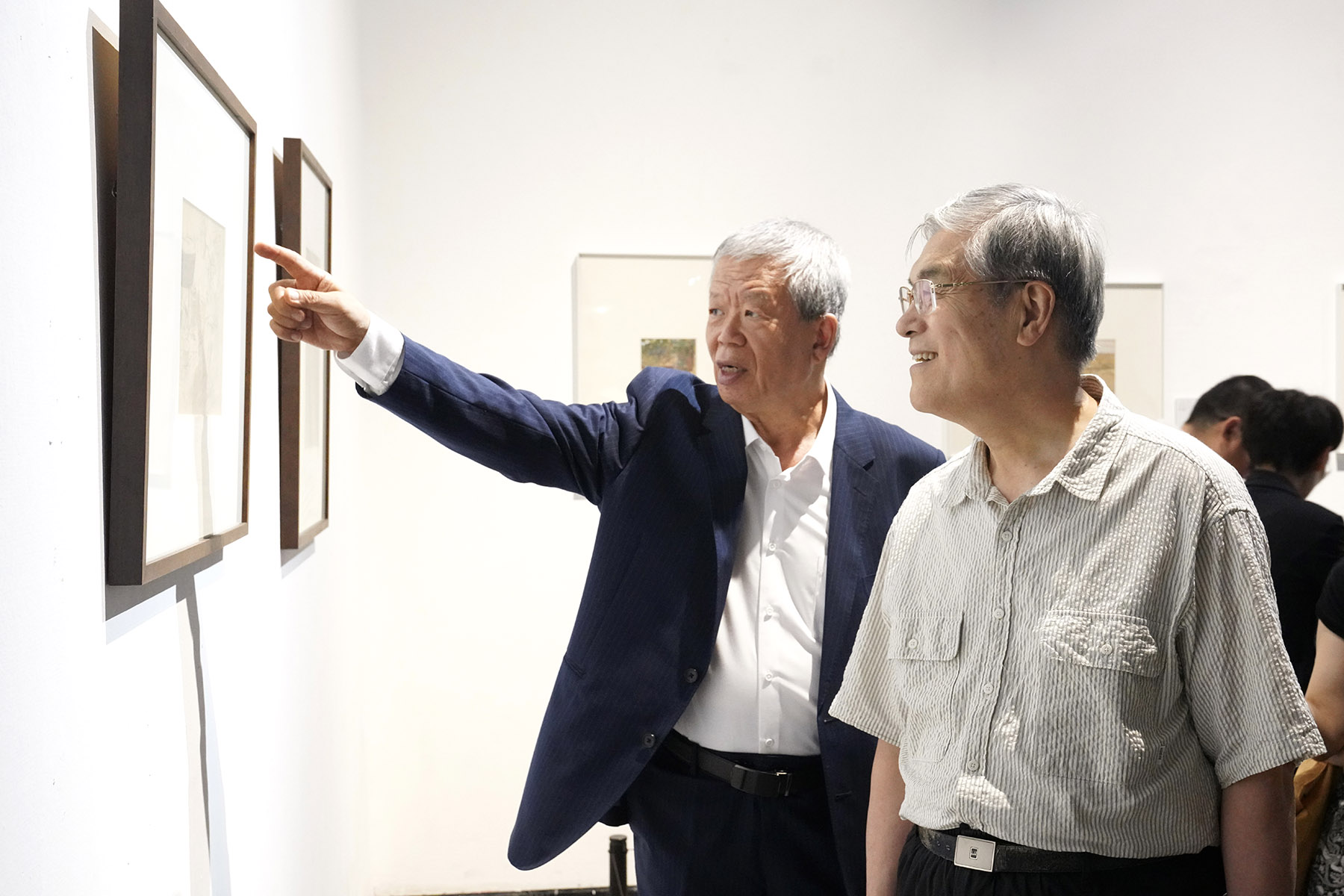
Gazing at the paintings of Chang Shuhong (1904-94), founding director of the Dunhuang Academy, people can still feel the fundamental draw of the Mogao Caves that brought him back from France in the 1930s, leaving behind a prospect of an emerging classical oil painter.
The following five decades saw him immerse in the charm of the treasure trove of Buddhist murals and painted sculptures as a wholehearted protector of the grottoes in the Gobi Desert of Northwest China.
His later works, therefore, were largely influenced by murals in the Mogao Caves of Dunhuang, Gansu province — a UNESCO World Heritage Site — and a more down-to-earth, local artistic expression of China popular at that time, says Zhang Yiqing, research librarian at the Zhejiang Provincial Museum in Hangzhou, Chang's hometown.
READ MORE: Mogao Caves' preservation inspires Syrian experts
In commemoration of the 120th anniversary of Chang's birth, some of his oil paintings, watercolors and sketches are on show at the museum through to Sunday.
The exhibits also include Chang's copies of the murals in the Mogao Caves, as well as zhongcai (heavy-color) paintings, an important genre of Chinese painting with fine, precise delimitation and the layering of pigmented hues.
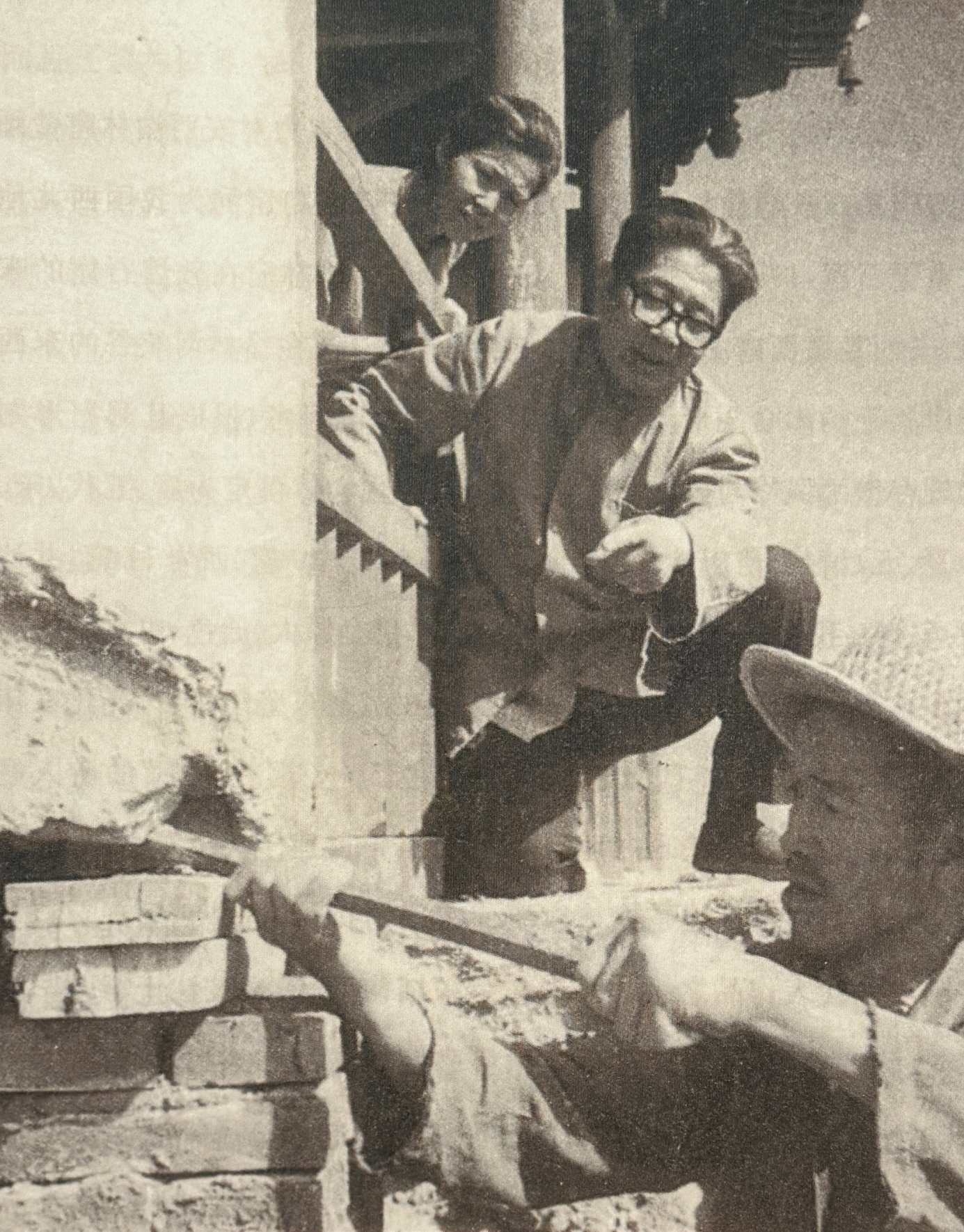
Through Chang's own depiction, the exhibition gives a display of early conservation efforts of the Dunhuang Academy, while tracing Chang's artistic exploration and achievements before and after he went back from France.
Chang was born in Hangzhou, a warm, wet and picturesque city along the lower reaches of the Yangtze River. In his early 20s, he went to France to study oil painting and fabric pattern design.
His graduation work at the Ecole Nationale Superieure des Beaux-Arts de Lyon, Portrait of Madame G, ranked top among his peer graduates. He later entered the prestigious Ecole Nationale Superieure des Beaux-Arts in Paris with a scholarship funded by the city of Lyon.
In France, Chang was active in salons, official art exhibitions sponsored by the French government. Having received several awards, some of his works were included among the collections of French cultural and artistic institutions, such as the Centre Pompidou in Paris.
An encounter on the bank of the Seine changed his life.
From a bookseller Chang got to read French explorer and Sinologist Paul Pelliot's photo catalog, the six-volume Les Grottes de Touen-Houang (The Grottoes of Dunhuang). He then visited the Guimet Museum, or the National Museum of Asian Arts, to see the relics of Dunhuang taken by Pelliot.
Chang marveled at the beauty and profoundness of the caves, first built more than 1,600 years ago, while mourning the loss of or damage to the cultural relics.
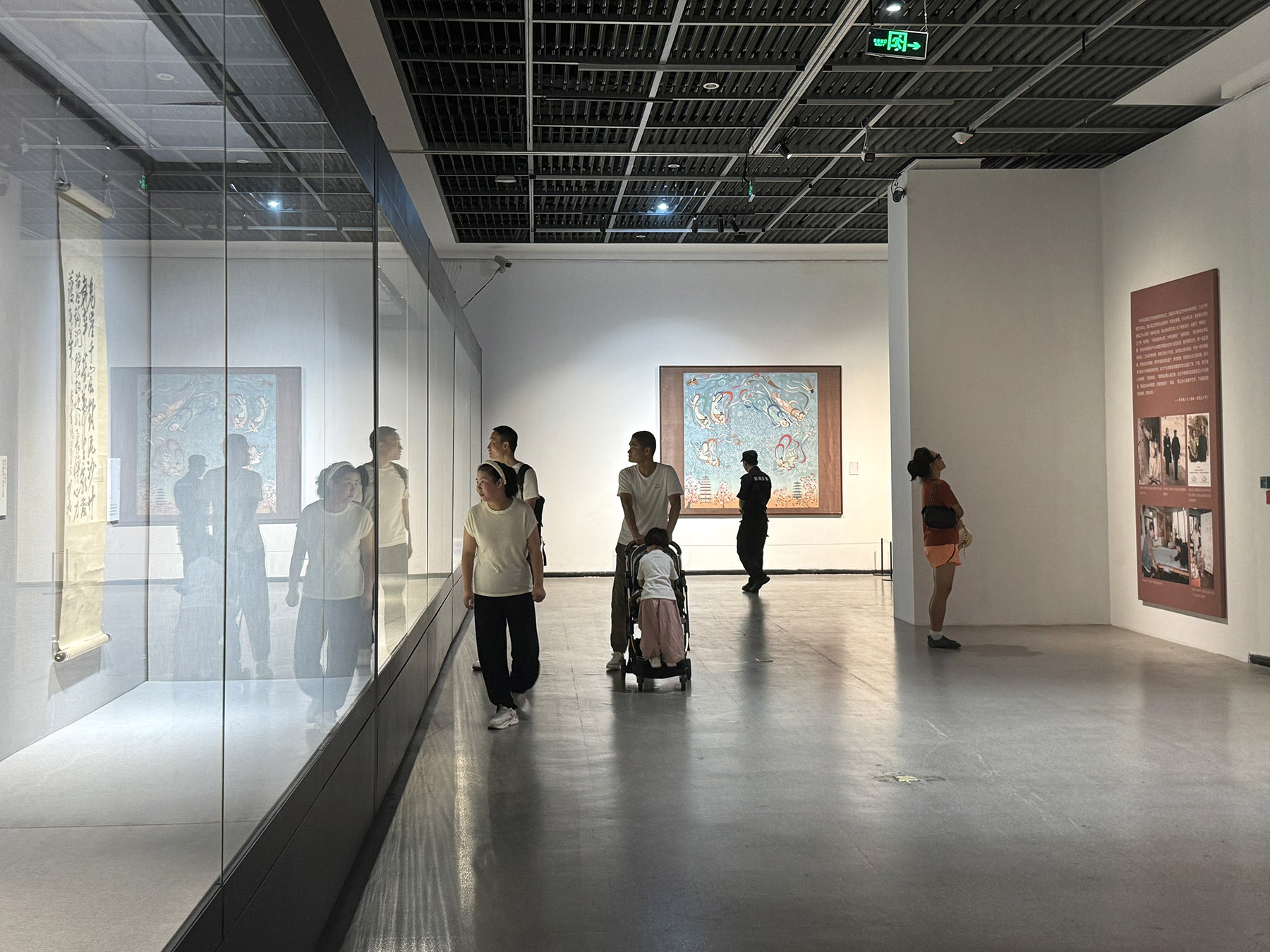
He then made up his mind to go back to his home country and devote his life to the preservation of the grottoes and the promotion of Dunhuang studies.
Chang came back in 1936. Amid the War of Resistance Against Japanese Aggression (1931-45), he managed to arrive in Dunhuang after a month's arduous journey in 1943 and prepared for the establishment of what is known today as the Dunhuang Academy.
This year also marks the 80th anniversary of the founding of the academy, which currently oversees the Mogao Caves and several other relics sites in Gansu.
In the late 1990s, Chang's second wife Li Chengxian (1924-2003) and their children donated more than 200 paintings of Chang to the Zhejiang Provincial Museum, a small part of which are displayed at the museum's permanent Chang Shuhong Gallery.
Zhang, who is also curator of the ongoing temporary exhibition, says its more than 80 paintings serve as a larger presentation of Chang's works housed at the museum, alongside the collection of Shanghai-based Long Museum and the private collection of Chang Jiahuang, Chang Shuhong's second son.

Sincere creativity
With his subtle brush, Chang Shuhong recorded the Mogao Caves and the Dunhuang city in different seasons: the trees and blossoms in spring; the frozen Daquan River in front of the caves during winter, children playing on ice, a white stupa in the distance; and birds in snow against the backdrop of the landmark timber-structured nine-floor building that houses the tallest statue of Maitreya Buddha, or the Buddha of the Future, at the Mogao Caves.
Upon his arrival, Chang Shuhong and colleagues pioneered a systematic conservation of the relics, planting trees and building protective walls, reinforcing the cliffs, constructing pathways, cleaning up the caves buried in sand, investigating and numbering them. Many of his paintings feature these efforts carried out at the windy and sandy Gobi Desert.
He also depicted several times the bustling temple fair in front of the caves, falling annually around the eighth day of the fourth month on the Chinese lunar calendar, in celebration of the birthday of Siddhartha Gautama (better known as the Buddha).
During the nine years in France, Chang Shuhong focused mainly on classical realistic oil painting, constantly exploring what could possibly become a "Chinese style of oil painting" and integrating it with his generation of artists' reflection of life and concern about society.
Hence, the art of Dunhuang particularly resonated with Chang Shuhong, as it was, in his own words, "created by ordinary people and for the ordinary people". He saw in it exuberant, sincere creativity that he realized would have a significant impact on the creation of art in the coming decades, Zhang says.
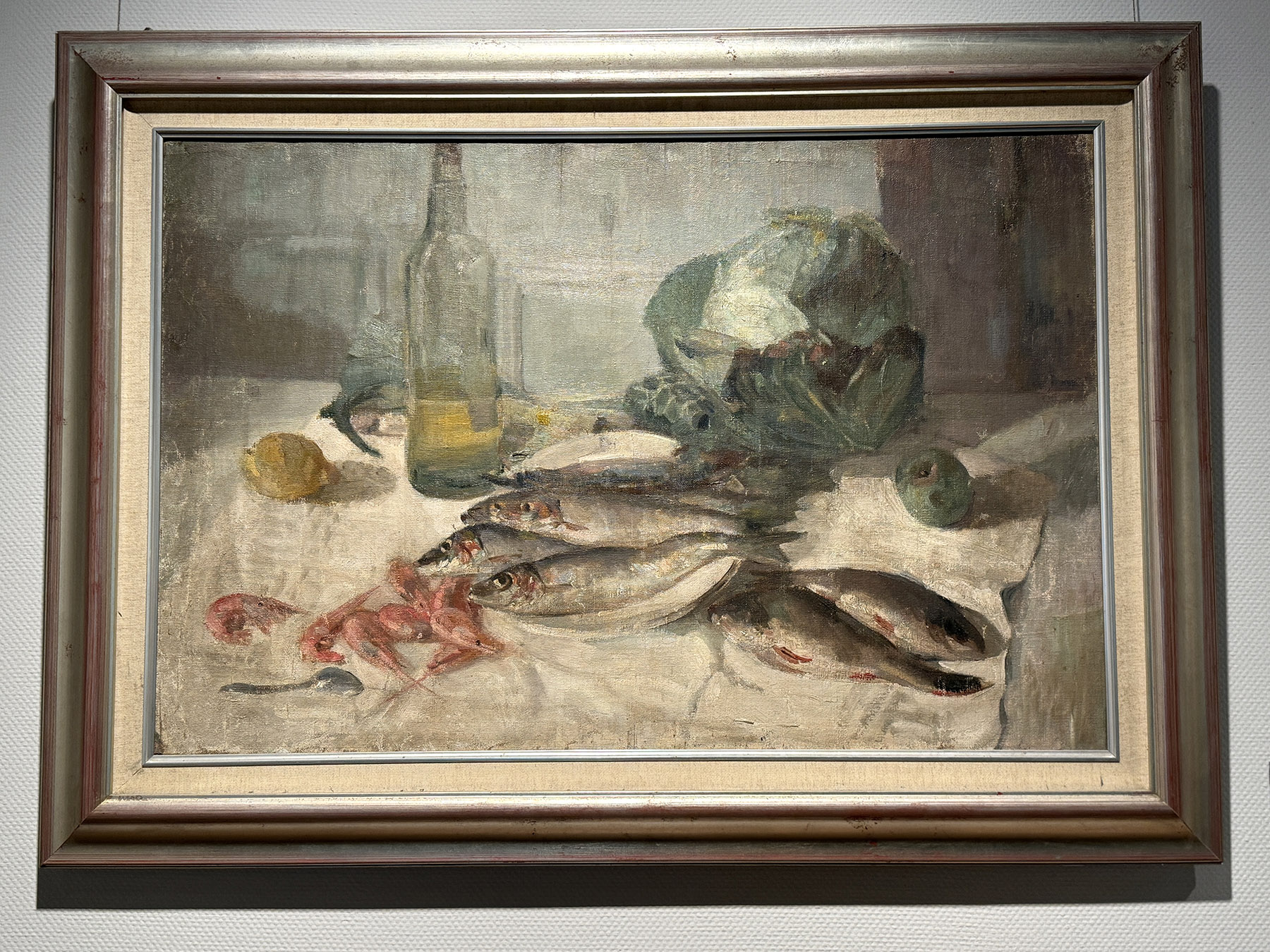
Two paintings of fresh produce Chang Shuhong created in different periods exemplify his transformation in artistic style. One was painted in 1933 in Paris, displayed at the Chang Shuhong Gallery, and the other in 1976, on show at the temporary exhibition.
The earlier painting, conforming to the classical style, is overall of a gray tone with low saturation, whereas in the latter one, the painter used bold and clear lines, large red and green blocks to create striking contrast, though like before, the fish glisten in subtle light.
Zhang adds that such transformation reflects the influence of the art of Dunhuang.
Highlights of the exhibition also include one of Chang Shuhong's facsimiles of a mural from Cave 254, dating back to the Northern Wei Dynasty (386-534), depicting a well-known piece of the Jataka tales, narratives of former incarnations of the Buddha. In his lifetime, Chang Shuhong copied this mural many times.
He once wrote, the creators of this mural, featuring Prince Sattva sacrificing himself to feed a hungry tigress, so cleverly and skillfully combined different scenes of different times in the space of a single picture — his trip to the jungles, his offering of his own blood and flesh to the tigress, as well as his two brothers' discovery of his remains, their grief, and how they bury their sibling and build a stupa for him.
A solemn and heavy atmosphere is strengthened with the lines and colors, the contours and content, as well as the deep brown hue, he added.
Chang Shuhong wrote in 1948 that conservation of the caves required detailed, accurate and systematic facsimile of the murals with a faithful attitude, which is a matter of patience and sacrifice of one's own style and personality. His devotion to protecting the Mogao Caves largely cut down the time and effort paid to his own painting.
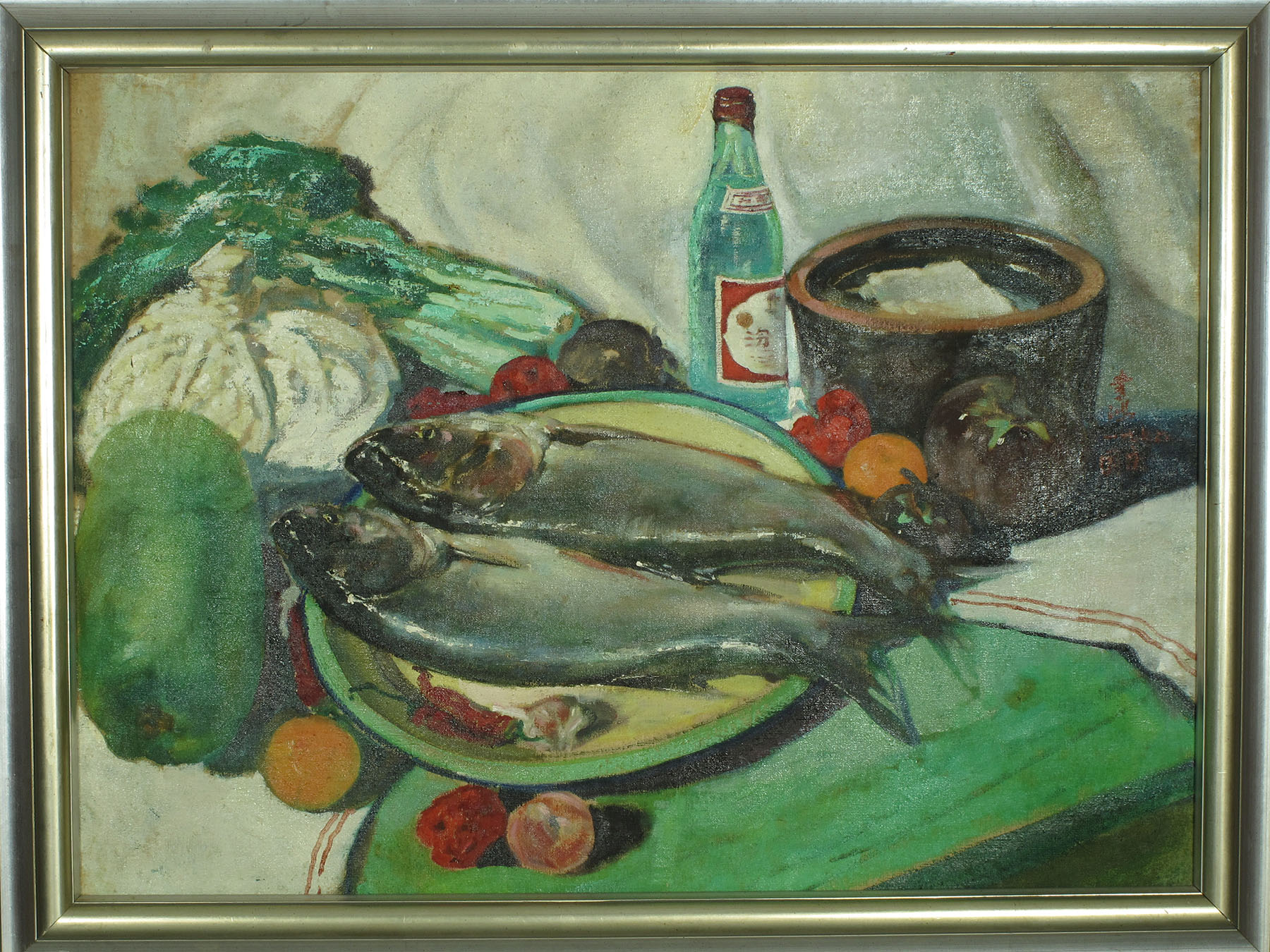
In 1951, staff members of the academy co-authored an article introducing their facsimile project, which said that over the past four decades, many of the murals presented in Pelliot's photo catalog had been destroyed or faded. With limited scientific knowledge and facilities, facsimile had become their priority and urgency.
According to Chang Jiahuang, since the 1950s, his father had been frequently inviting art majors from across the country to copy the murals and sculptures of the Mogao Caves, while learning the traditional arts of Dunhuang.
In 1979, he also replicated the mural featuring Prince Sattva of Cave 254, when he and a dozen classmates at the Lanzhou-based Academy of Fine Art and Design of Northwest Normal University joined this program under the strict supervision of his father, who, nevertheless, would sometimes visit them without notice late at night in the caves where they were working, bringing pears he himself grew.
Chang Jiahuang says: "It was only after a long time that I learned from my father's memoir why he had such an attachment to this mural and why he wanted me to copy it.
"During his most difficult times, this painting inspired him, generating courage for him to persevere. In those three months, I deeply felt the dedication of ancient painters of Dunhuang and my own parents."
This year also marks the 100th anniversary of his mother's birth, who joined in the research and conservation of the Mogao Caves in 1947. In April, the son donated their family's 1,500 boxes of belongings to Zhejiang University, his father's alma mater, for research and digitalization.
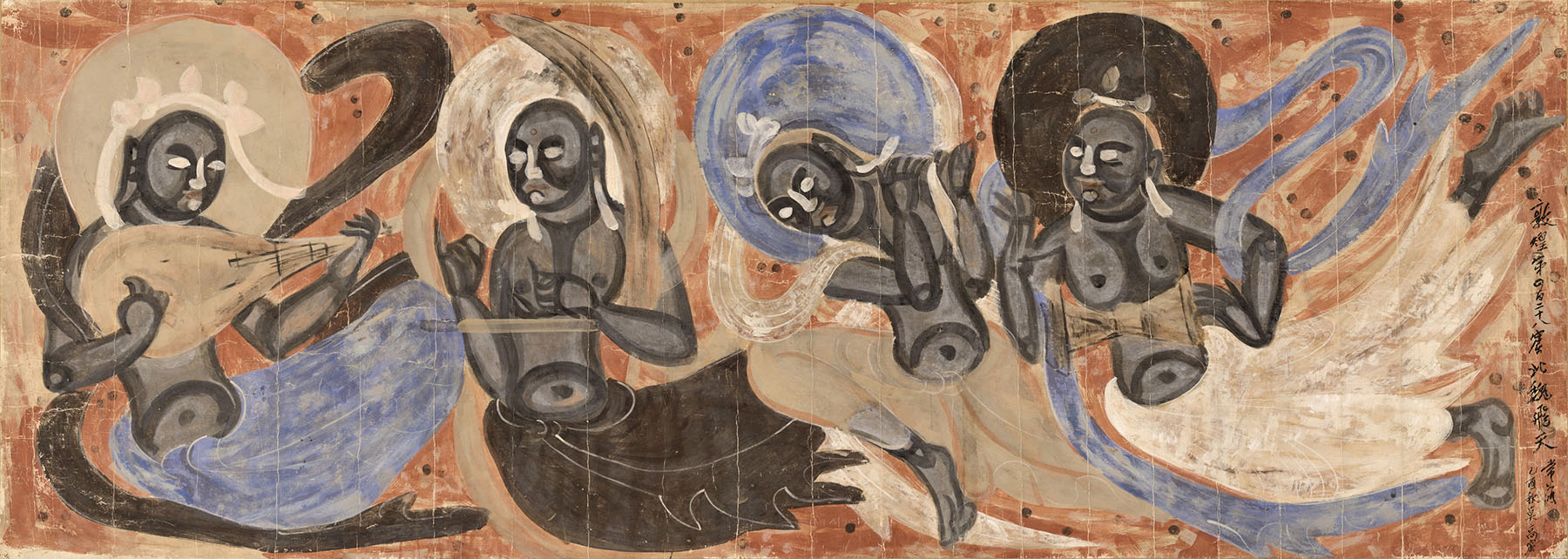
Embracing technology
As early as in the 1980s, Chang Shuhong had foreseen the potential of digitalization in cultural relics conservation.
Pan Yunhe, academician at the Chinese Academy of Engineering and former principal of Zhejiang University, who joined the initial digitalization exploration of the Mogao Caves, recalls his first meeting with Chang Shuhong in 1982.
At that time, Chang Shuhong was among the jury of Pan's first academic program, which pioneered in generating patterns with artificial intelligence. Chang Shuhong expressed interest in preserving the murals of Dunhuang with a digital approach, visiting Pan's laboratory and discussing the feasibility.
"He was open-minded and very sensitive to new things. Ahead of his time, he could always absorb new things into his own creation," Pan says, adding that Chang Shuhong was very kind and gentle to young people like him, who was at that time in his 30s.

In 1998, the Dunhuang Academy and Zhejiang University launched an academic program led by Pan and sponsored by the National Natural Science Foundation of China to explore preservation, research and utilization of the Mogao Caves on a digital basis.
Pan says, the launch of the program resulted from years of endeavor with the Chang family — the parents, firstborn daughter Chang Shana, who was director of what is now Academy of Arts and Design of Tsinghua University, and Chang Jiahuang — as well as Fan Jinshi, who took charge as director of the Dunhuang Academy that year.
ALSO READ: Repairing the past, restoring our future
"Chang Shuhong was well-established in oil painting. It's a pity he painted so little in the latter part of his life," Pan said while visiting the exhibition at the Zhejiang Provincial Museum on Sept 29.
That day, Chang Jiahuang said at the exhibition's opening ceremony that as his parents' student, secretary and assistant, he witnessed their twists and turns, their creation and research, and experienced their art and spirits, following which he grew to become introspective, modest and rigorous.
According to him, the ongoing exhibition is the largest display of Chang Shuhong's paintings since 1990 and a good presentation of the master's spirits conveyed through his works.
Contact the writer at fangaiqing@chinadaily.com.cn


